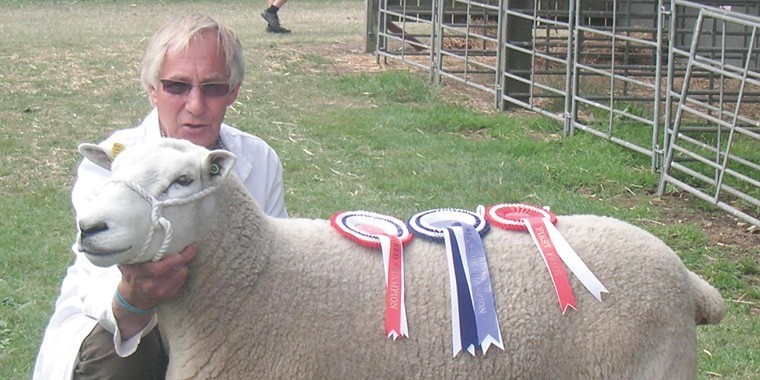Some years are forgettable. Others lodge themselves very firmly in one’s memory, with 2001 being an example of the latter (those that were around at the time will know why). 2007 for similar reasons and I suspect that 2018 will be another such year, although for quite different reasons.
This year will be memorable for two big reasons: principally, the extremes of weather that we have endured and to a lesser extent, our seemingly inexhaustible ability to invent an ever increasing list of pratfalls in relation to our Brexit negotiations. The former we can do absolutely nothing about and the latter, well, I’m really not so sure.
Extreme weather seems to have been a recurring theme running throughout 2018. We have experienced a number of record or near record events of hot, cold, wet, dry with a few windy days thrown in just to season the mix; all of which have had a significant impact on both us and our sheep.
We were lulled into a rather false sense of security with a reasonably gentle start to the year and then, suddenly, the “Beast from the East” was upon us. For the sheep generally, this was not a big issue: in fact my lambs seemed to quite enjoy the snow. With a belly full of milk it is surprising what they will put up with – remarkably tough little things if you can keep them topped up.
The ewes did not appreciate their predicament quite as much. The cold and snow probably generated more problems for sheep keepers than for sheep, with frozen troughs and pipes simply keeping fresh, liquid, water in front of them (so important for lactating ewes). This occupied quite a bit of time as did carrying hay to ewes. The impact on grass supplies (or lack of) probably had the most significant effect, a situation that altered quite dramatically with some warmer weather and a drop of rain.
The only problem was that the drop of rain was quite a big drop, more than twice the normal rainfall for March and 50% above average in April. The grass grew, but the exceedingly wet conditions meant that many producers simply could not get stock out onto it.
Fields quickly became mud baths and for those lambing outside, life really was very difficult and devastating for some. It was a struggle at times to simply get around without the additional complication of trying to stop cold and wet lambs slipping into hypothermia. What would we have given for a bit of nice warm sun, which we got eventually, in buckets, come July and early August. What would we have given then for a nice drop of rain?
It certainly has been an interesting year, one that has, undoubtedly, had a significant impact on sheep, some much more so than others. What has endured is probably an early warning of the potential impact of global warming and climate change (a one degree centigrade increase in average global temperatures (fact) may not seem a lot, but potentially its impact is enormous). To deny its existence is foolhardy: we might argue about its cause and what contribution we have made, but we cannot argue about its reality and part of that new reality will surely be an increase in extreme weather events. What we have seen this year could easily become the new norm, and one that requires new ideas and approaches.
One of the biggest challenges this year has been keeping sufficient feed in front of the stock, in terms of both quantity and quality. Grass is far from being the ideal forage crop: it stops growing in the winter, when it is too cold at less than seven degress centigrade and in the summer, slows down and eventually stops when it is too dry at more than 25 millimetres soil moisture deficit (SMD).
But, we have to feed sheep for 365 days of the year. We have adjusted to the winter gap, with hay or silage etc. but the summer gap is providing a bit more of a challenge. Certain grasses may help and some of the new varieties of cocksfoot have reasonably good feed value and are more drought tolerant than most other grasses, as are some of the newer varieties of festoliums.
Alternatively expanding the range of forage crops that we employ undoubtedly has the capacity to provide a significant part of that new reality. Crops with a deep tap root such as chicory and plantain can follow moisture down through the soil profile. Chicory in particular has stayed green and growing all summer, and more winter hardy crops can extend the grazing season (on suitable soils) well into the winter e.g. stubble turnips, forage rape (November/December), rape/kale hybrids (December/January) and kale (January/February), linking up with early bite crops such as forage rye (February/March).
A new reality requires some new thought, and new thought requires an open mind to deal with some of the new challenges that we are and will be facing, whether those challenges are from nature or politicians. Which will be the easiest to cope with? Who knows? The former we can do nothing about. The latter; I suppose, depends very much on which self serving cabal of disingenuous, egocentric, bumbling, incompetents is the circus ringmaster at the time, controlling the rather outsized alley of clowns.
Just as a point of interest, the current SMD (16 October) for mid Kent is 105 millimetres (a little more than four inches for the Brexiteers). It really is only heavy dews, a bit of mist and the odd shower of rain that is keeping grass going at the moment.




